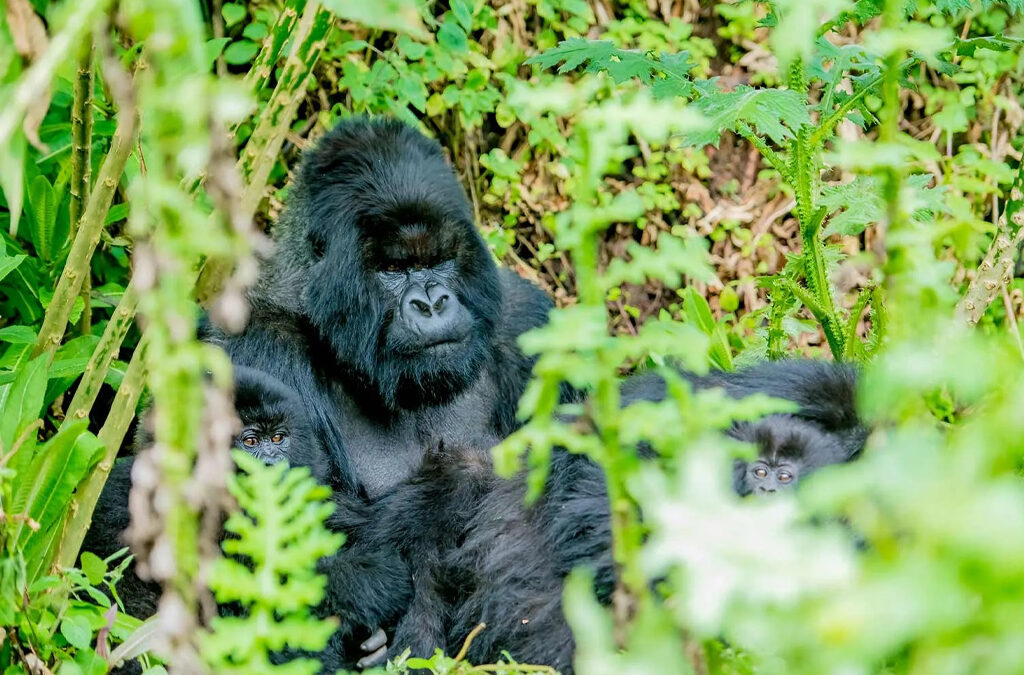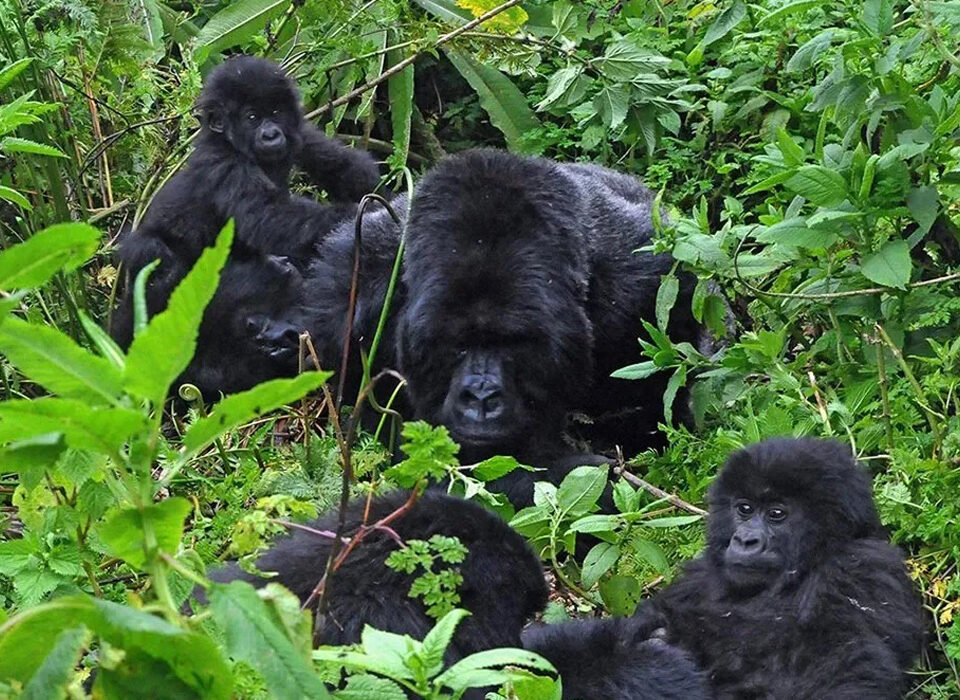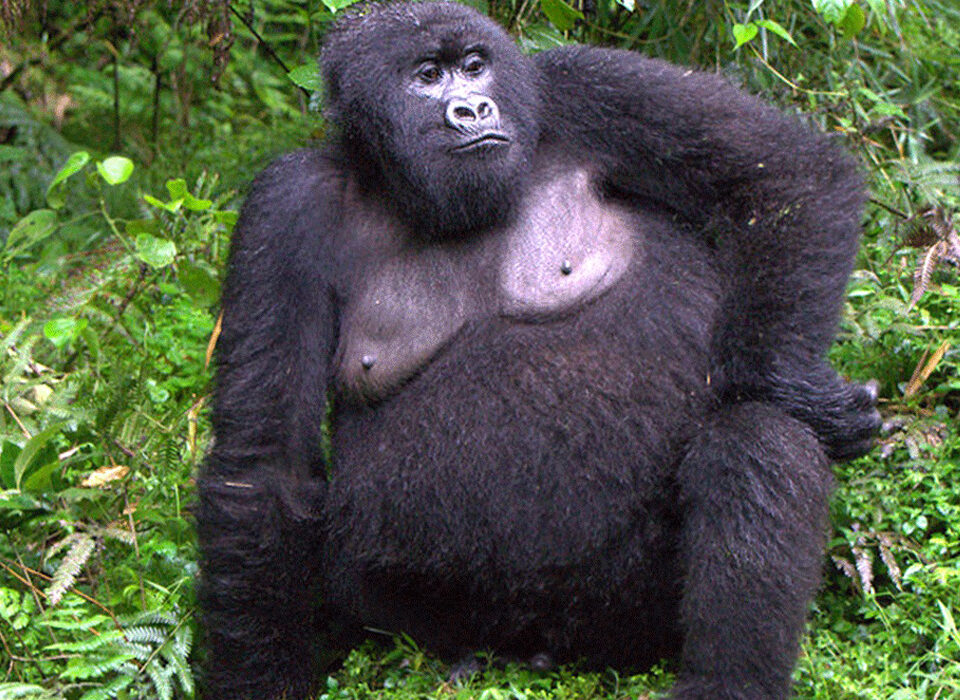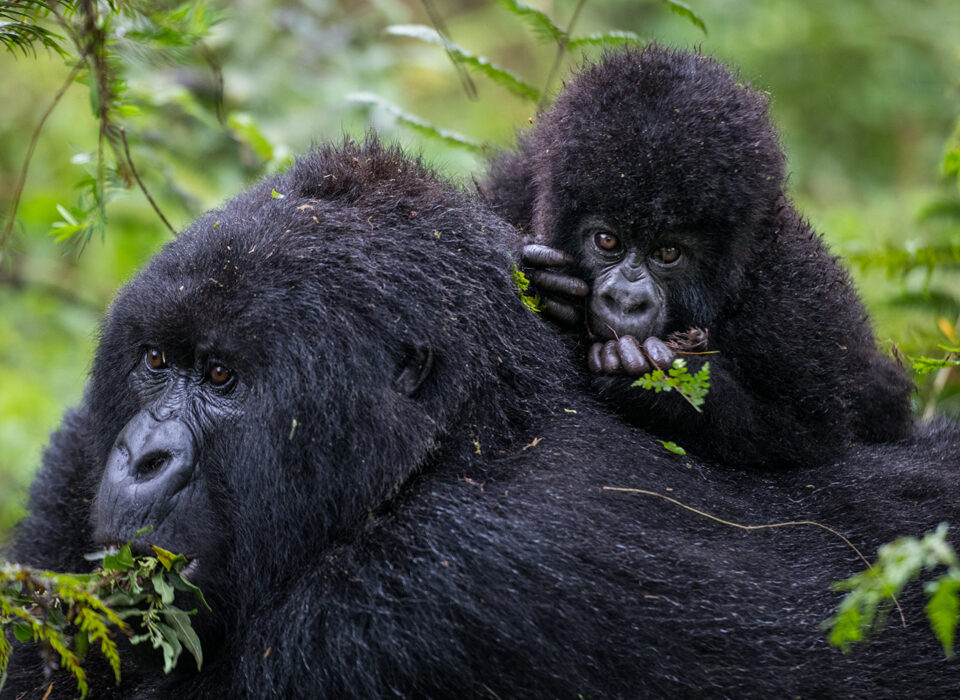- GET IN TOUCH WITH US:
- +256 753518160
- +256 777842166
- info@experiyatourcompany.com

2 Days Masai Mara Safari
October 3, 2025
Most Popular Gorilla Family Groups in Rwanda
October 3, 2025Explained Gorilla Trekking Tour Packages

Gorilla trekking is one of Africa’s most extraordinary wildlife experiences. It gives you the rare chance to come face-to-face with mountain gorillas in their natural habitat. Unlike a traditional safari where animals are viewed from a vehicle, gorilla trekking requires you to hike through lush rainforests, climb steep hills, and cross mist-covered valleys until you finally encounter a gorilla family. Watching these great apes feed, groom, and interact in the wild is often described as life-changing.
Because gorillas are critically endangered and live only in a few regions, trekking is strictly regulated. This has led to the creation of specialized gorilla trekking tour packages that combine permits, transport, guides, accommodation, and sometimes even extensions to nearby national parks.
This guide explains where gorilla trekking takes place, what tour packages include, the best time to visit, what to expect on the trek, and how to prepare.
Where to Go Gorilla Trekking in Africa
Mountain gorillas live in only four countries in East and Central Africa. Each destination offers a unique trekking experience, different levels of accessibility, and a distinct cultural flavor.
In Uganda, gorilla trekking takes place in Bwindi Impenetrable National Park and Mgahinga Gorilla National Park. Bwindi alone is home to nearly half of the world’s remaining mountain gorillas and is divided into four trekking sectors: Buhoma, Ruhija, Rushaga, and Nkuringo. Uganda also offers the rare Gorilla Habituation Experience, available only in Rushaga and Nkuringo, where trekkers can spend up to four hours with semi-habituated gorillas.
In Rwanda, trekking happens in Volcanoes National Park. Located just two and a half hours from Kigali International Airport, it is the most accessible gorilla trekking destination. Treks here are often less strenuous than in Uganda, which makes Rwanda ideal for short trips. The country has positioned itself as a luxury trekking destination with higher permit fees but excellent infrastructure and eco-tourism standards.
In the Democratic Republic of Congo (DRC), travelers can trek mountain gorillas in Virunga National Park or visit Kahuzi-Biega National Park to see eastern lowland gorillas. Congo is the only country where both species can be seen. Treks here are less crowded and permits are more affordable, but travelers must always check the security situation before planning a trip.
In the Republic of Congo (Congo-Brazzaville), trekking focuses on western lowland gorillas in Nouabalé-Ndoki National Park, especially around Odzala-Kokoua. This remote destination attracts adventurous travelers seeking immersive rainforest experiences, often combined with eco-lodge stays and guided explorations.
How Gorilla Trekking Tour Packages Work
Gorilla trekking tours simplify travel by taking care of logistics that are often complex to arrange independently. Packages vary in length and style but all aim to deliver a smooth and rewarding experience.
Some tours last just a single day. This is possible in Rwanda, where travelers can leave Kigali in the morning, trek in Volcanoes National Park, and return the same day. The most popular option, however, is the three-day trek. This itinerary usually begins with arrival on day one, the gorilla trek on day two, and departure on day three.
Those who want a deeper experience often book tours lasting four to seven days. These itineraries combine gorilla trekking with chimpanzee tracking in Uganda’s Kibale National Park, golden monkey trekking in Rwanda, or wildlife safaris in Queen Elizabeth National Park. Longer tours lasting one to two weeks usually cross into multiple countries, mixing gorilla trekking with Big Five safaris, cultural visits, and time for relaxation at lakes or beaches.
What Tour Packages Include
Every package centers on the gorilla trekking permit, which costs between 400 and 1,500 US dollars depending on the country. The permit grants official access to the trek and forms the most important part of the package.
Packages also include transportation to and from the parks, accommodation ranging from budget lodges to luxury camps, and meals during the trek. Guides and rangers are part of every experience to ensure safety and provide interpretation of the forest. Some tours add cultural visits, birding excursions, boat rides, or additional treks to see chimpanzees or golden monkeys.
Types of Gorilla Trekking Packages
Travelers can choose packages that match their style and budget. Budget tours focus on affordability, using simple lodges and group transport. Mid-range tours provide more comfort with better lodges and smaller groups. Luxury packages, on the other hand, elevate the experience with exclusive lodges, private guides, and sometimes even helicopter transfers, especially in Rwanda. These options transform the trek into an indulgent once-in-a-lifetime journey.
Best Time to Go Gorilla Trekking
You can trek gorillas throughout the year, but the dry seasons are the most popular. From June to September and from December to February, trails remain drier and easier to hike. Visibility is clearer, though permits sell out quickly during these months.
The rainy seasons from March to May and October to November bring heavier rainfall. Trails become muddy and gorillas often move deeper into the forest, making hikes more challenging. However, fewer tourists visit at this time and permits are sometimes discounted, particularly in Uganda and DRC. This makes the wet season appealing to travelers seeking a quieter, more intimate experience.
What to Expect on a Gorilla Trek
The trekking day begins with a morning briefing at the park headquarters. Rangers explain the rules and assign groups of no more than eight trekkers to each gorilla family.
The trek itself can last from one to six hours, depending on the gorillas’ location. Hikers navigate steep slopes, thick vegetation, and altitudes up to 2,600 meters. The moment of reward comes when the gorillas are finally found.
Trekkers then spend one magical hour watching them feed, groom, and interact. Those who choose the habituation experience in Uganda spend up to four hours with the gorillas. Visitors must follow strict rules: keep a seven-meter distance, avoid flash photography, and stay away if unwell, protecting both humans and gorillas.
How to Prepare and What to Pack
Preparation makes the trek safer and more enjoyable. Long-sleeved shirts and trousers protect against nettles and insects. A waterproof jacket or poncho helps with sudden showers, while sturdy hiking boots with ankle support make navigating the forest easier. Many trekkers wear gaiters or long socks to guard against insects, and gloves provide grip and protection from thorns.
A small daypack is useful for carrying water, snacks, and personal essentials. Walking sticks or trekking poles are often provided but bringing your own can add comfort. Sunscreen, insect repellent, a hat, and sunglasses help protect against the elements. Finally, a camera without flash and a compact first-aid kit complete the packing list.
Choosing the Right Gorilla Trekking Package
The right tour package depends on fitness, budget, and travel style. Trekkers with mobility concerns can request to be assigned to gorilla families that live closer to the starting point. Rwanda offers the most accessible treks but has the highest permit costs. Uganda provides the widest range of experiences, while DRC and Congo-Brazzaville attract adventurous travelers with more affordable or remote options.
Booking early is essential, especially during the peak dry seasons. It is also important to choose a responsible operator who contributes to gorilla conservation and supports local communities. Doing so ensures your journey not only fulfills your dream but also makes a positive impact.
Final Thoughts
Gorilla trekking tour packages provide a safe, organized, and unforgettable way to meet these gentle giants. By bundling permits, transport, accommodation, and guides, they remove the stress of planning and allow you to focus on the adventure.
Each destination has something unique to offer: Uganda with its variety and habituation, Rwanda with its accessibility and luxury, DRC with its affordability and adventurous spirit, and Congo-Brazzaville with its rare lowland gorilla treks.
With the right package and careful preparation, gorilla trekking becomes more than a safari activity. It transforms into a conservation journey that leaves you with lasting memories while helping to secure the survival of these incredible animals for generations to come.



